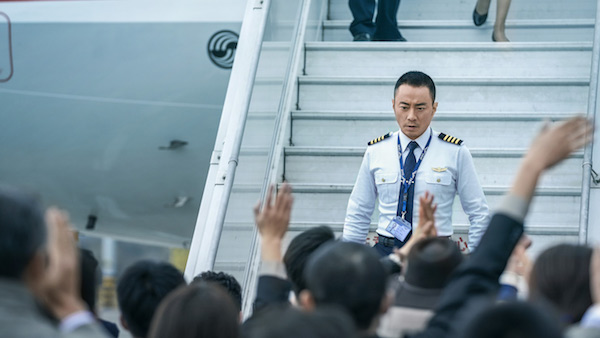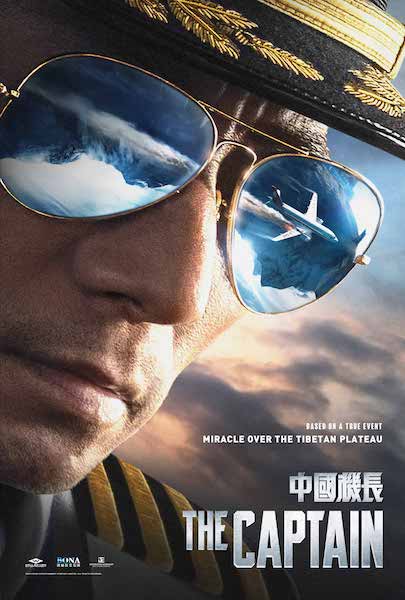
Passengers on a flight to Tibet survive accidents and weather in a disaster pic that’s become a blockbuster hit in China. Well Go USA Entertainment opened the film in New York on October 18 prior to further engagements in the US.
Based on a real-life incident, The Captain is just as functional as the crew it depicts. Flying from Chongqing to Lhasa on May 14, 2018, Captain Liu Changjian (the tight-lipped Zhang Hanyu) encountered turbulence that ripped out a cockpit windshield. Although only 40 miles from Chengdu, the closest airport, Liu faced weather so severe that the entire flight was in jeopardy.
Written by Yu Yonggan (The Bravest) and directed by Andrew Lau, The Captain takes place in a well-known movie world. Anyone familiar with aviation disaster pics (a genre so ripe it produced Airplane!) will see every trope played out with grim determination here. Liu assures his young daughter he’ll return in time for her birthday party. A stewardess tells her colleague she is having too much fun to think about a family. A young passenger hasn’t seen his father in years. You can almost feel the bullet points being crossed off.
Some reviewers have compared this to Clint Eastwood’s Sully. The two films have a tangential connection in that both are based on actual events. But Eastwood took his movie into novel areas: the psychological repercussions of the accident, flaws in the air traffic investigation, etc. He also toyed with the format, staging several versions of the accident throughout the film, each one revealing new angles and nuances. In every single way The Captain stays true to the formula.
Lau, a former cinematographer responsible for the enduring Young and Dangerous franchise and the insanely good Infernal Affairs trilogy, has recently been mired in propaganda like The Founding of an Army and commercial misfires like Kung Fu Monster. No matter what his subject matter, his filmmaking instincts remain sound. The Captain has a crisp, clean visual style, tight editing, and a narrative momentum that can be beguiling.
Still, Lau has to bow to certain pressures. Sichuan Airlines and its employees, in fact the entire aviation industry come off as dedicated, professional, and, apart from some mild bantering, completely focused on work. The first half-hour of The Captain is stuffed with checklists, preps, mini-biographies, and long, indulgent montages about air traffic control rooms, luggage handlers, safety inspections, ticket lines, weather forecasts — all tinged with foreshadowing that can feel oppressive. They’re shot beautifully, Lau’s restless, edgy cameras peering everywhere. The scope of The Captain is massive. But the movie is so straightforward, almost stodgy, that it seems listless.
Quan Yuan stands out in the cast as Bi Nan, head of the flight attendants. She defuses difficult passengers with practiced ease, and stays cool despite the increasing peril she faces. Few of the other passengers and crew are differentiated with any care. What’s important for Lau and his team is to include friendly portraits of some ethnic types, in particular Tibetans.
The Captain glosses over China’s poor record with Tibet, and with ethnic groups in general. It also assigns the villain role to a dimwitted Caucasian who incites panic among the passengers. And it turns soggy at the end, as passengers correct their character flaws and crew members accept romances they previously spurned before joining in a rousing patriotic sing-along.
The central story in The Captain remains an exciting tale of heroism, and the film does the best it can to honor that story.



